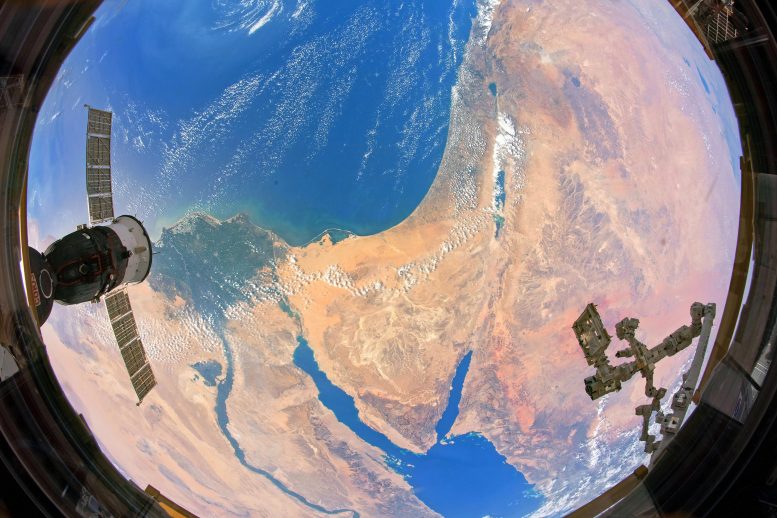
Astronaut Andrew Morgan captured this wide-angle photograph of the southeastern Mediterranean coastline from the central Cupola window of the International Space Station (ISS) in August 2019.
Astronaut Andrew Morgan used a fisheye lens to capture the intersection of two continents.
Astronaut Andrew Morgan shot this wide-angle photograph from the central Cupola window of the International Space Station (ISS) in August 2019. The Soyuz capsule and the Canadarm2 frame this image of the southeastern Mediterranean coastline. The 16 mm fisheye lens, though infrequently used, allows for a unique view encompassing landscapes from two continents—the Nile Delta in Africa and the Sinai Peninsula and the Levant in southwest Asia.
The Nile Delta formed where the lower Nile flows north into the Mediterranean Sea. This fertile, vegetated region makes a sharp contrast with the surrounding desert; it has been the center of agriculture in the region for thousands of years. East of the delta, the Sinai Peninsula acts as a land bridge between the African and Asian continents. South of the Sinai, the Red Sea separates the Arabian Peninsula from Egypt.
The Levant derives it name from Italian and French references to the Sun rising in the east. The region including present-day Syria, Lebanon, Jordan, Israel, and Palestine. Straddling the border of Jordan, Israel, and the West Bank, the Dead Sea is visible beneath a small patch of clouds. The Dead Sea has the lowest land elevation on Earth (430 meters/1,412 feet below sea level) and is one of the saltiest bodies of water in the world.
Learn more about astronaut photography in the Picturing Earth video series: part 1 Astronaut Photography in Focus; part 2 Window on the World; and part 3 Behind the Scenes.
Astronaut photograph ISS060-E-37265 was acquired on August 18, 2019, with a Nikon D5 digital camera using a 16 millimeter lens and is provided by the ISS Crew Earth Observations Facility and the Earth Science and Remote Sensing Unit, Johnson Space Center. The image was taken by a member of the Expedition 60 crew. The image has been cropped and enhanced to improve contrast, and lens artifacts have been removed. The International Space Station Program supports the laboratory as part of the ISS National Lab to help astronauts take pictures of Earth that will be of the greatest value to scientists and the public, and to make those images freely available on the Internet.


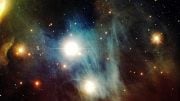

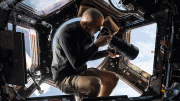
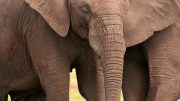

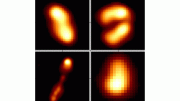
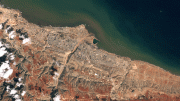
Be the first to comment on "Fisheye Over Sinai: Capturing the Intersection of Two Continents From Space"